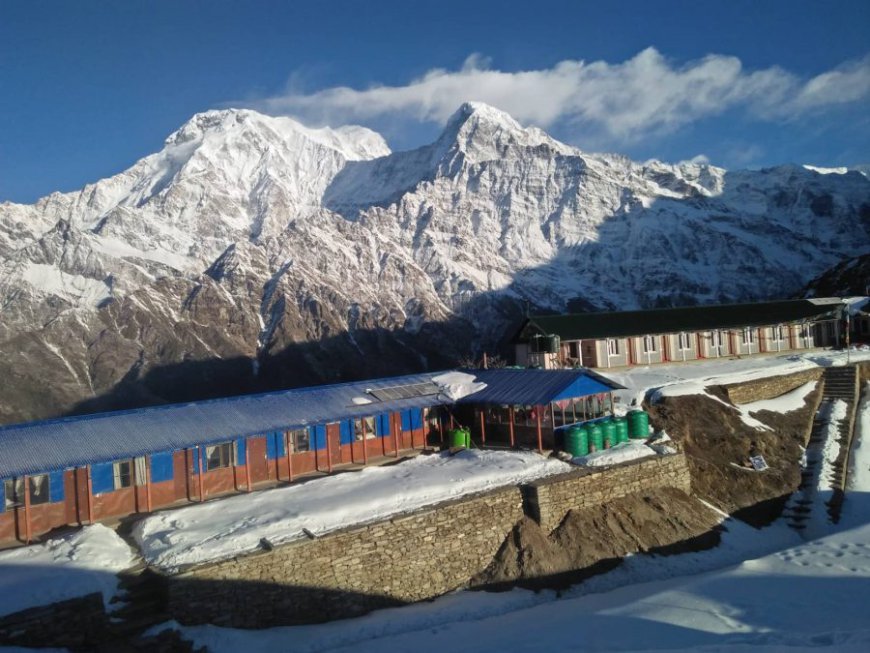What to Eat on the Mardi Trek?
Every trekker in Nepal knows the phrase, “Dal Bhat Power, 24 Hour.” This traditional Nepali meal is a staple on the Mardi Trek and for a good reason.

The Mardi Trek is one of those hidden gems that not only provides spectacular views, but also allows you to connect with the local culture through cuisine. As I trekked through the calm trails of this lesser-known route, I understood that the food you consume on the Mardi Trek is just as important as the trek itself. It’s an aspect of the experience that sticks with you long after you’ve returned home.
The Basics: Dal Bhat Power
Every trekker in Nepal knows the phrase, “Dal Bhat Power, 24 Hour.” This traditional Nepali meal is a staple on the Mardi Trek and for a good reason. Dal Bhat consists of steamed rice and lentil soup, often accompanied by vegetables, pickles, and sometimes a bit of curried meat. It’s hearty, nutritious, and gives you the energy you need to tackle the steep climbs and long days on the trail.
When I had my first plate of Dal Bhat at a teahouse, it was more than just a meal; it was a warm hug in the cold mountain air. The simplicity of the ingredients reminded me of how the locals make the most of what they have. It made me appreciate the warmth and care that goes into every plate, a reminder that food is more than just fuel — it’s a connection.
A Taste of the Local Culture: Momos and Thukpa
As you trek higher, you’ll come across small teahouses where you can find momos and thukpa. Momos are Nepali dumplings, either steamed or fried, filled with vegetables, chicken, or buff (buffalo meat). Thukpa is a Tibetan noodle soup that’s rich and comforting, especially after a long day of trekking.
One evening, after a particularly tough climb, I found myself at a small, family-run teahouse. The owner, an elderly woman with a kind smile, served me a bowl of thukpa that I’ll never forget. It wasn’t just the taste — it was the feeling of being cared for, the understanding that even in these remote mountains, someone was looking out for you. The warmth of the soup mirrored the warmth of the hospitality, and it’s moments like these that make the Mardi Trek special.
The Sweet Reward: Tibetan Bread and Honey
Tibetan bread is another treat you’ll find along the way. This thick, slightly sweet bread is usually served with butter or honey. It’s perfect for breakfast, giving you a good start to the day. After hours of trekking, I remember sitting down with a cup of tea and a piece of warm Tibetan bread drizzled with honey. It was a simple pleasure, but in that moment, it felt like a reward for all the hard work.
The sweetness of the honey, the softness of the bread, and the quiet of the mountains around me — it was a reminder to savor the little things. On the Mardi Trek, food isn’t just about filling your stomach; it’s about nourishing your spirit.
Staying Hydrated: Tea, Tea, and More Tea
Staying hydrated on the trek is crucial, and you’ll find that tea is the drink of choice. From sweet milk tea to strong black tea, every cup is an opportunity to warm up and relax. I often found myself sitting by the fire in a teahouse, sipping tea and chatting with fellow trekkers or the teahouse owners. These moments of connection, over a simple cup of tea, made me feel less like a visitor and more like a part of the community.
Snacks to Keep You Going
Don’t forget to pack some snacks for the trek. Dried fruits, nuts, energy bars, and chocolate are all great for a quick boost of energy. I always kept a handful of trail mix in my pocket for when I needed a little pick-me-up. There’s something comforting about having a familiar snack from home as you trek through the unfamiliar terrain.
Final Thoughts: The Emotional Connection
The food on the Mardi Trek isn’t just about sustenance; it’s about the connection you make with the people who prepare it, the culture it represents, and the way it sustains you through the physical and emotional challenges of the trek. Each meal is a reminder that in these mountains, where life is simpler and more challenging, food is a source of comfort, warmth, and connection.
As you walk the trails of Mardi, remember to take the time to enjoy each meal. Let it be a moment to pause, reflect, and connect with the journey you’re on. The food you eat on the Mardi Trek is more than just calories — it’s a part of the experience that will stay with you, long after you’ve left the mountains behind.
